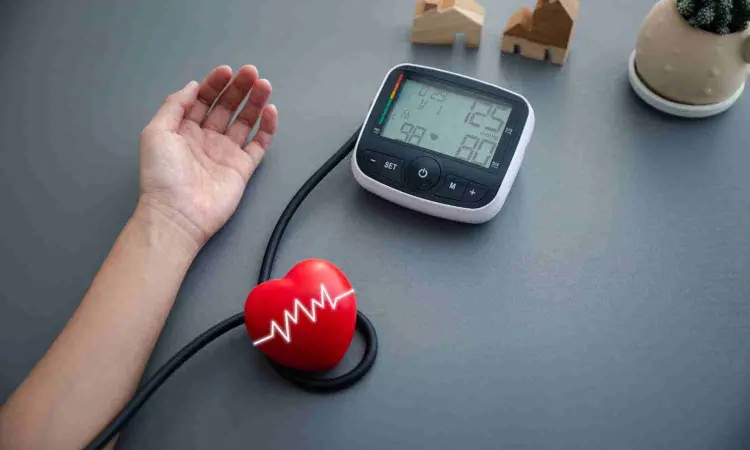- Home
- Medical news & Guidelines
- Anesthesiology
- Cardiology and CTVS
- Critical Care
- Dentistry
- Dermatology
- Diabetes and Endocrinology
- ENT
- Gastroenterology
- Medicine
- Nephrology
- Neurology
- Obstretics-Gynaecology
- Oncology
- Ophthalmology
- Orthopaedics
- Pediatrics-Neonatology
- Psychiatry
- Pulmonology
- Radiology
- Surgery
- Urology
- Laboratory Medicine
- Diet
- Nursing
- Paramedical
- Physiotherapy
- Health news
- Fact Check
- Bone Health Fact Check
- Brain Health Fact Check
- Cancer Related Fact Check
- Child Care Fact Check
- Dental and oral health fact check
- Diabetes and metabolic health fact check
- Diet and Nutrition Fact Check
- Eye and ENT Care Fact Check
- Fitness fact check
- Gut health fact check
- Heart health fact check
- Kidney health fact check
- Medical education fact check
- Men's health fact check
- Respiratory fact check
- Skin and hair care fact check
- Vaccine and Immunization fact check
- Women's health fact check
- AYUSH
- State News
- Andaman and Nicobar Islands
- Andhra Pradesh
- Arunachal Pradesh
- Assam
- Bihar
- Chandigarh
- Chattisgarh
- Dadra and Nagar Haveli
- Daman and Diu
- Delhi
- Goa
- Gujarat
- Haryana
- Himachal Pradesh
- Jammu & Kashmir
- Jharkhand
- Karnataka
- Kerala
- Ladakh
- Lakshadweep
- Madhya Pradesh
- Maharashtra
- Manipur
- Meghalaya
- Mizoram
- Nagaland
- Odisha
- Puducherry
- Punjab
- Rajasthan
- Sikkim
- Tamil Nadu
- Telangana
- Tripura
- Uttar Pradesh
- Uttrakhand
- West Bengal
- Medical Education
- Industry
Single tablet with 4 BP lowering drugs can be more effective than taking 3 drugs in separate pills: ESC 2024

A single-pill combination of four blood-pressure (BP)-lowering medications was significantly more effective than a combination of three medications, according to late-breaking research presented in a Hot Line session today at ESC Congress 2024.
Explaining why new treatment strategies are needed for hypertension, Principal Investigator, Professor Stefano Taddei from the University of Pisa, Italy, said: “Patients with resistant hypertension on three BP medications, namely a diuretic, a renin-angiotensin system inhibitor and a calcium channel blocker, require the addition of a fourth medication. However, adherence decreases with the number of pills prescribed. In the QUADRO trial, we investigated adding bisoprolol, as part of a single-pill combination of four different BP-lowering medications, and found this was more effective than receiving three BP-lowering medications.”
In the double-blind randomised controlled QUADRO trial, patients with resistant hypertension initially entered an 8-week run-in period where they received the triple combination of perindopril, indapamide and amlodipine at optimal doses (either 10/2.5/5 mg or 10/2.5/10 mg daily, if tolerated). Those who still had uncontrolled BP after 8 weeks (office systolic BP ≥140 mmHg and 24-hour ambulatory systolic BP ≥130 mmHg), while being adherent to the therapy, were randomised 1:1 to either continue the same triple therapy or to receive a single-pill combination containing perindopril, indapamide, amlodipine and bisoprolol (at either 10/2.5/5/5 mg or 10/2.5/10/5 mg daily) for 8 weeks. To preserve the blinding, patients in the two groups received the same number of pills every day: two capsules and one tablet. The primary endpoint was the change in office systolic BP. Secondary endpoints included 24-hour ambulatory BP monitoring, office diastolic BP, home BP and BP control.
In total, 183 patients were randomised from 49 centres in 13 countries. The mean age was 57 years and 47% were female. Mean office BP at baseline was 150.3 mmHg for systolic BP and 90.0 mmHg for diastolic BP.
After 8 weeks, mean office sitting systolic BP had reduced by 20.67 mmHg (standard deviation [SD] 15.37) in the quadruple single-pill group and reduced by 11.32 mmHg (SD 14.77) in the triple group. The adjusted difference between the groups was significant in favour of the quadruple single pill (−8.04 mmHg; 95% confidence interval [CI] −11.99 to −4.09; p<0.0001).
A significant difference was also seen for the main secondary endpoint of mean 24-hour ambulatory systolic BP in the quadruple single-pill group vs. the triple group (−7.53 mmHg; 95% CI −10.95 to −4.11; p<0.0001). In addition, a significant difference was seen for mean office sitting diastolic BP in the quadruple single-pill group vs. the triple group (−6.14 mmHg; 95% CI −9.00 to −3.27; p<0.0001).
Overall, BP control (office sitting BP <140/90 mmHg) was achieved by 66.3% of patients on the quadruple single pill vs. 42.7% on triple therapy (p=0.001). Ambulatory BP normalisation (mean BP over 24 hour <130/80 mmHg) was 51.2% vs. 20.7% in favour of quadruple single pill (p<0.0001). Home BP normalisation (<135/85 mmHg) was achieved by 60.7% of patients on quadruple single-pill therapy vs. 25.4% on triple therapy (p<0.0001).
There were no major differences between the two groups in terms of adverse events, and no serious adverse events were reported.
“We were able to demonstrate the superiority of the quadruple single-pill combination, whichever BP measurement method was used. The availability of a quadruple single-pill combination that includes bisoprolol could help with non-adherence and provide much-needed effective BP control in patients with resistant or difficult-to-treat hypertension,” concluded Professor Taddei.
Dr Kamal Kant Kohli-MBBS, DTCD- a chest specialist with more than 30 years of practice and a flair for writing clinical articles, Dr Kamal Kant Kohli joined Medical Dialogues as a Chief Editor of Medical News. Besides writing articles, as an editor, he proofreads and verifies all the medical content published on Medical Dialogues including those coming from journals, studies,medical conferences,guidelines etc. Email: drkohli@medicaldialogues.in. Contact no. 011-43720751


